Stir-fried cucumber, a dish that may seem deceptively simple, holds a cherished place in Chinese home cooking and beyond. Often overlooked in favor of more elaborate dishes, this humble vegetable transforms into a culinary delight when prepared with care and technique. The key to achieving a memorable stir-fried cucumber lies in balancing texture, flavor, and aroma—a trifecta that elevates this dish from mundane to magnificent. In this guide, we will explore the nuances of selecting, preparing, and cooking cucumber to create a dish that is both refreshing and satisfying, perfect as a side or a light main course.
The Foundation: Choosing the Right Cucumber
Not all cucumbers are created equal, and selecting the right variety is the first step toward stir-fry success. In Chinese cuisine, the most commonly used cucumber for stir-frying is the Chinese cucumber (Cucumis sativus), also known as the “garden cucumber” or “long cucumber.” These cucumbers are characterized by their slender shape, thin skin, and minimal seeds, making them ideal for quick cooking. Their high water content ensures a crisp texture, while their mild, slightly sweet flavor provides a versatile canvas for seasonings.
Alternatively, Persian cucumbers or Japanese cucumbers can be excellent substitutes, offering similar crispness and a delicate taste. Avoid waxy, thick-skinned varieties like English cucumbers, as their tough exteriors and dense flesh can lead to a soggy texture when stir-fried. When shopping, look for cucumbers that are firm, vibrant green, and free of blemishes. Smaller cucumbers tend to be sweeter and less seedy, enhancing the final dish’s appeal.
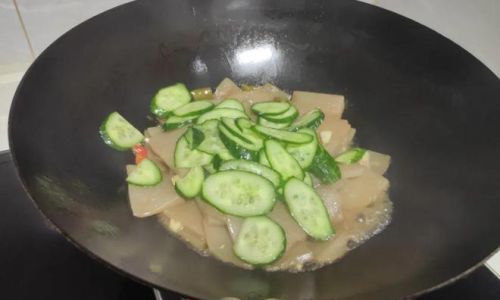
Preparation: The Key to Crisp Perfection
The secret to a memorable stir-fried cucumber lies in meticulous preparation. Begin by washing the cucumber thoroughly under cool water to remove any dirt or residues. Pat it dry with a clean kitchen towel to prevent excess moisture from diluting the seasonings during cooking.
Next, decide whether to peel the cucumber. While the skin is edible and adds a subtle bitterness, some prefer removing it for a smoother texture. Use a vegetable peeler or a sharp knife to gently strip away the skin, leaving thin strips of green for visual contrast if desired. For a rustic touch, leave the skin intact but scrub it vigorously to eliminate any waxy coatings.
Slicing technique is critical. Cut the cucumber into thin, diagonal slices approximately 2-3 millimeters thick. Diagonal cuts maximize surface area, allowing the cucumber to absorb seasonings evenly while cooking. Alternatively, halve the cucumber lengthwise, scoop out the seeds with a spoon (to reduce moisture), and slice into half-moons. This method ensures uniform cooking and prevents the dish from becoming waterlogged.
To further enhance texture, sprinkle the sliced cucumber lightly with salt and let it rest for 10-15 minutes. This step, known as “sweating,” draws out excess moisture, concentrating the cucumber’s natural flavors and preventing a watery dish. Rinse the salted cucumber under cold water, drain thoroughly, and pat dry with paper towels.
Seasonings and Aromatics: Building Flavor Layers
Stir-fried cucumber thrives on a harmonious blend of aromatics and seasonings. The classic trio of garlic, ginger, and dried chili peppers forms the flavor backbone, but creativity knows no bounds. Here’s a breakdown of essential and optional ingredients:
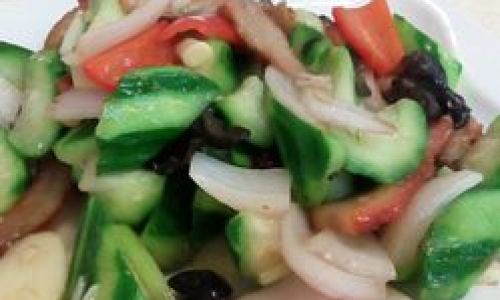
- Garlic: Mince or thinly slice 3-4 cloves for a pungent, aromatic base.
- Ginger: A 1-inch piece of fresh ginger, julienned, adds warmth and depth.
- Dried Chili Peppers: 2-3 whole peppers, snipped into segments, impart a gentle heat without overwhelming the dish.
- Soy Sauce: Light soy sauce (1-2 tablespoons) seasons the cucumber with saltiness and umami.
- Rice Vinegar: A splash (1 teaspoon) brightens the dish with acidity.
- Sesame Oil: A drizzle (½ teaspoon) at the end adds nutty richness.
- Sugar: A pinch balances the flavors and caramelizes slightly during cooking.
- Cornstarch Slurry: Optional (1 teaspoon cornstarch mixed with 2 tablespoons water) for a glossy finish.
For added complexity, consider incorporating:
- Black Fungus (Wood Ear Mushrooms): Rehydrated and sliced, these add a chewy texture.
- Carrots: Julienned for color and sweetness.
- Scallions: Chopped green parts for garnish.
- Shaoxing Wine: A splash (1 tablespoon) for depth.
The Cooking Process: Mastering Heat and Timing
Stir-frying is a dance of heat and motion, requiring precision to achieve the desired texture. Follow these steps for flawless execution:
-
Preheat the Wok: Heat a wok or large skillet over high heat until it begins to smoke. Add 2 tablespoons of neutral oil (such as peanut or vegetable oil) and swirl to coat the pan.
-
Sauté Aromatics: Add the garlic, ginger, and dried chilies. Stir-fry for 10-15 seconds until fragrant but not browned.
-
Add Cucumber: Toss in the prepared cucumber slices. Use a spatula to spread them into a single layer, allowing direct contact with the hot pan. Let them sear undisturbed for 30 seconds to develop a slight char.
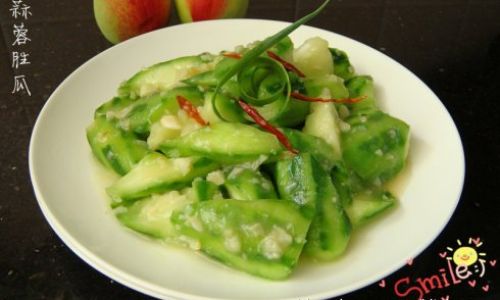
-
Stir-Fry Vigorously: Toss the cucumber continuously for 2-3 minutes. The high heat will evaporate moisture quickly, preserving crispness. Avoid overcrowding the pan; cook in batches if necessary.
-
Season and Toss: Drizzle in the soy sauce, rice vinegar, and sugar. Toss to coat evenly. If using black fungus or carrots, add them now.
-
Thicken (Optional): For a glossy sauce, push the cucumber to one side of the wok and pour the cornstarch slurry into the cleared space. Stir until thickened, then mix everything together.
-
Finish with Sesame Oil: Remove from heat and drizzle with sesame oil. Garnish with scallions.
Pro Tips for Stir-Fry Success
- High Heat is Non-Negotiable: Stir-frying at lower temperatures will steam the cucumber, resulting in a mushy texture. Ensure your pan is smoking hot before adding oil.
- Don’t Overcrowd the Pan: Excess cucumber slices will lower the pan’s temperature, leading to steaming. Cook in batches if needed.
- Salt in Advance: Salting the cucumber beforehand prevents a watery dish and intensifies flavor.
- Customize the Heat: Adjust chili peppers to taste, or omit them for a mild version.
- Experiment with Texture: For added crunch, toss in a handful of toasted peanuts or sesame seeds before serving.
Health Benefits of Stir-Fried Cucumber
Beyond its culinary appeal, stir-fried cucumber offers a host of health benefits:
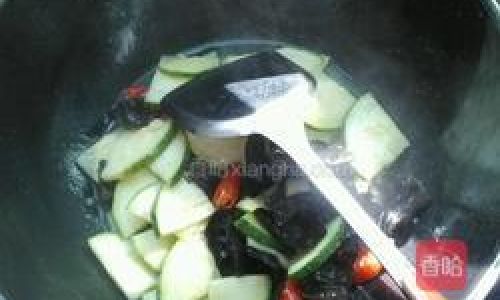
- Hydration: Cucumbers are 95% water, making this dish incredibly hydrating.
- Low in Calories: A 100-gram serving contains just 15 calories, ideal for weight management.
- Rich in Nutrients: High in vitamin K, vitamin C, and potassium, which support bone health and immunity.
- Antioxidant Properties: Compounds like flavonoids and tannins combat oxidative stress.
- Digestive Aid: Fiber and water content promote healthy digestion.
Regional Variations and Creative Twists
Stir-fried cucumber’s versatility shines in regional adaptations and modern interpretations:
- Sichuan-Style: Add doubanjiang (fermented chili bean paste) and Sichuan peppercorns for a numbing, spicy kick.
- Cantonese Twist: Incorporate oyster sauce and a sprinkle of white pepper for umami depth.
- Vegetarian Delight: Mix in stir-fried tofu or mushrooms for a protein-rich meal.
- Seafood Infusion: Toss in shrimp or scallops during the final minute of cooking.
- Herbaceous Finish: Garnish with fresh cilantro, basil, or mint for a refreshing twist.
Troubleshooting Common Issues
- Soggy Cucumber: Overcooking or insufficient salting are common culprits. Ensure the pan is hot, and cook in batches if needed.
- Bland Flavor: Increase soy sauce or add a pinch of salt. Balance with a touch more vinegar or sugar.
- Burnt Aromatics: Reduce heat slightly and stir-fry aromatics for a shorter time.
- Lack of Color: Overcrowding the pan causes steaming. Maintain high heat and avoid stirring too frequently initially.
Serving Suggestions
Stir-fried cucumber pairs beautifully with:
- Steamed Rice: The classic accompaniment, soaking up the dish’s savory juices.
- Noodles: Toss with chilled noodles for a refreshing summer meal.
- Grilled Meats: Balance rich proteins like duck or pork with its light crispness.
- Dumplings: Serve as a palate-cleansing side during dumpling feasts.
- Congee: Add to rice porridge for texture and flavor contrast.
The Cultural Significance of Stir-Fried Cucumber
In Chinese cuisine, stir-fried cucumber embodies the philosophy of hao chi bu rou—”delicious without meat.” Born from necessity during lean times, this dish symbolizes resourcefulness and the art of transforming simple ingredients into culinary treasures. Today, it remains a staple in household kitchens, revered for its balance of simplicity and sophistication.
Conclusion: Elevating the Everyday
Stir-fried cucumber is more than a side dish—it’s a testament to the magic of minimalism. By mastering the interplay of heat, texture, and seasoning, even the humblest ingredients can shine. Whether you’re a novice cook or a seasoned chef, this dish invites creativity and rewards precision. So next time you crave a meal that’s both nourishing and vibrant, let the cucumber take center stage. With practice, you’ll discover that perfection lies not in complexity, but in the quiet art of doing justice to the ordinary.
Final Tip: Experiment fearlessly! Add a splash of lime, a sprinkle of furikake, or a dash of fish sauce. The best recipes are those that reflect your palate. Happy cooking!
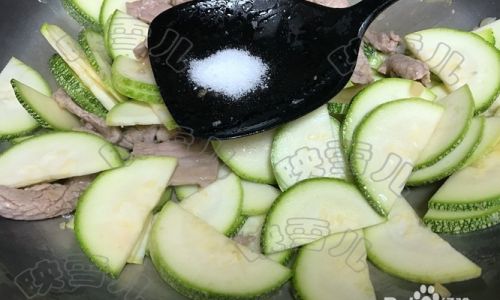
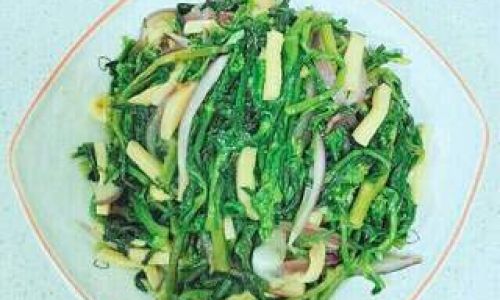
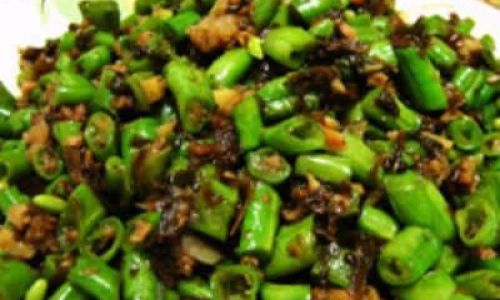



0 comments